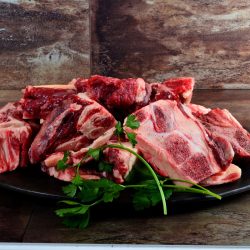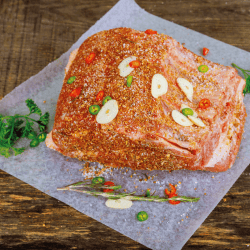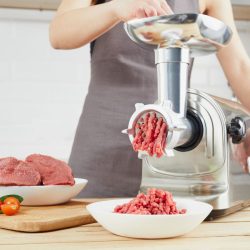Nothing compares with succulent, fall-off-the-bone ribs, whether baby back, spare, or St. Louis-style. Wrapping ribs in foil is a common technique for smoking ribs, but should you do it when cooking ribs in the oven? We've done the finger-licking research, and here's what you need to know.
It is best to wrap your ribs in foil or butcher paper when baking them. Wrapping them protects ribs from drying out during cooking, making it easier to cook amazing ribs at home.
We'll look at wrapping ribs in foil in more detail and also cover other tips for getting mouthwatering ribs at home. We'll also investigate the safety of using aluminum foil for cooking and useful alternatives. Read on to learn all about it!
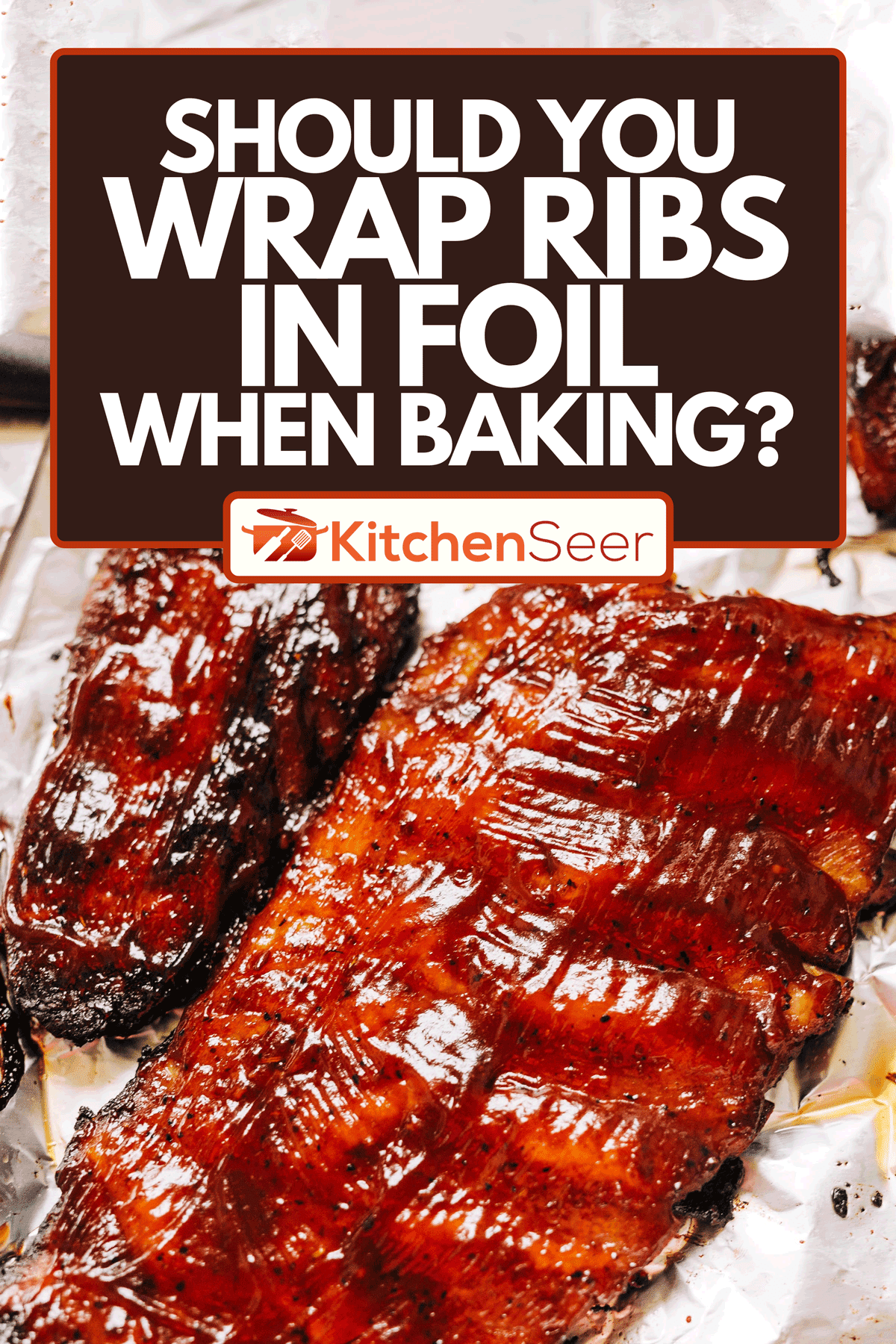
Why Wrap Ribs in Foil?
In BBQ circles, wrapping meat in foil is known as the "Texas crutch." It's a common technique used by casual backyard BBQ hobbyists as well as professionals, like renowned pitmaster Aaron Franklin. But why?
The main reason is to prevent the meat from drying out. Cuts of meat like ribs, brisket, and pork shoulder contain a lot of connective tissue. It takes time for that connective tissue to cook and soften. However, the time required to cook down that tissue can also evaporate the juices from the meat, leaving it dry.
Covering with foil or butcher paper helps trap in fat and juices so they can braise and be reabsorbed by the meat. This results in meat that stays moist and luscious despite the long cooking time.
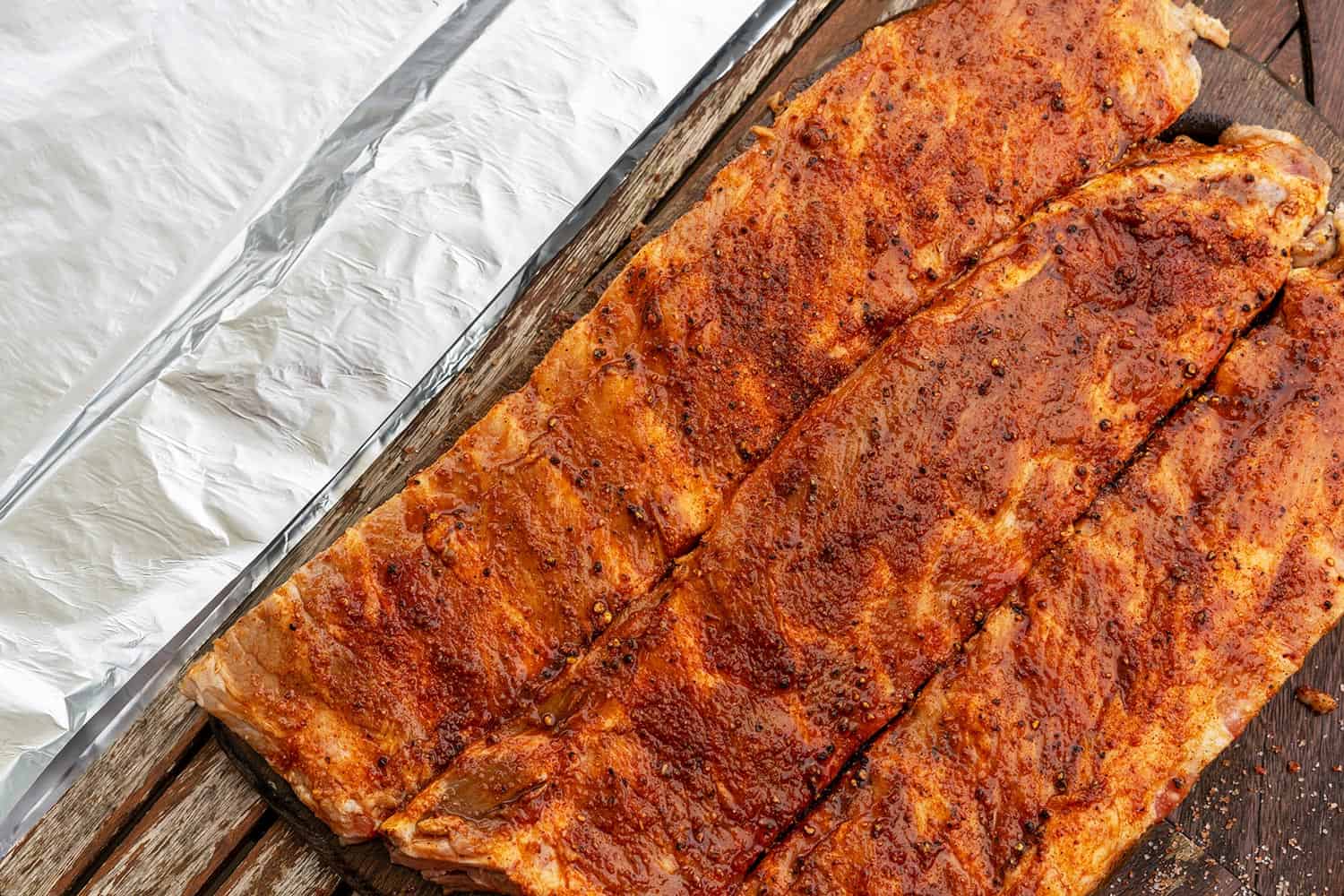
Does Wrapping Ribs in Foil Make them Tender?
We've seen how wrapping ribs can help keep them moist, but does it make them more tender? The answer to this question is both yes and no.
With ribs and other tough cuts of meat, keeping them moist doesn't guarantee that they'll be tender. That's because of the connective tissue in the meat. This tissue is mostly made of tough collagen. If you've ever had a rib you couldn't sink your teeth into, let alone pull the meat off the bone; collagen is to blame.
To get the meat tender and succulent, you need to cook that collagen down into gelatin. You read that right. The same substance that gives the jiggle to that cranberry jello salad at Thanksgiving is also present in your ribs.
Cooking collagen into gelatin takes time and moderate temperatures. It's this balance of time and heat that makes ribs tender.
Wrapping the ribs doesn't make them more tender per se, but it does allow you to keep the meat moist longer so you can cook down more of the connective tissue. Uncovered ribs dry out well before the collagen breaks down.
What Do you Put in Foil when Wrapping Ribs?
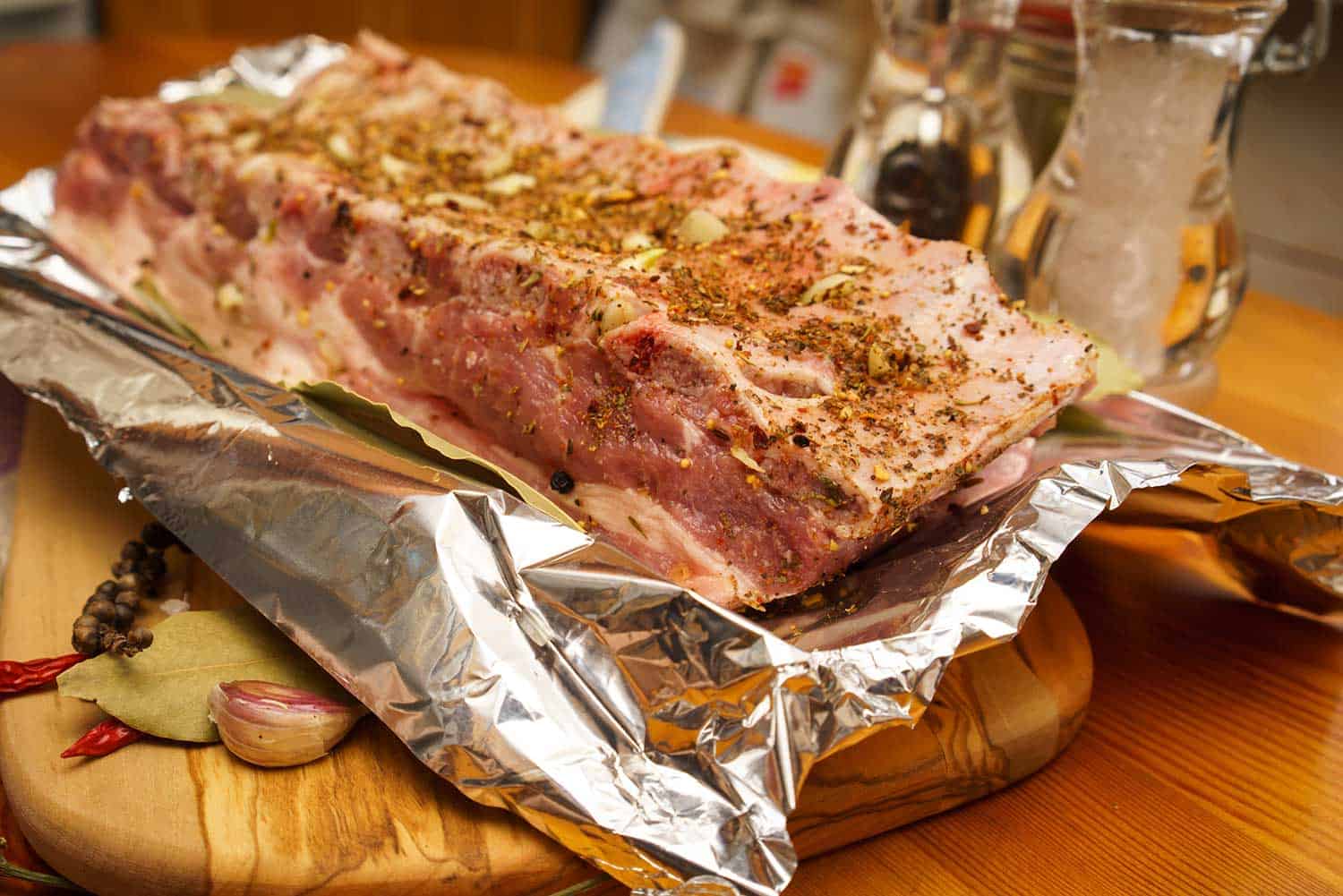
You don't need to put anything else in the foil but the ribs seasoned to your liking. However, juices can leak out of the foil, which can lead to a mess in your oven. Because of this, it's best to put your wrapped ribs on a baking tray to catch any juices that make their way out of your foil package.
What temperature do I cook pork ribs in the oven?
Like other cuts popular with pitmasters, ribs do best with a low-and-slow cooking method. Lower temperatures and longer times break down the connective tissue better than high temperatures can.
This recipe uses 225º F (108º C) for 4 hours for cooking baby back ribs, with sauce added for the last half hour of cooking. You can also cook St. Louis-style ribs in this way but will need an extra 30 minutes due to the greater amount of connective tissue.
If you don't have 4 hours to spare, you can always increase the temperature and decrease the time. The connective tissue won't break down as much, but you can still have awesome ribs this way. This recipe from Cafe Delites calls for a 350º F (180º C) oven for 2 hours, then cranking up the heat to 460º F (240º C) with the ribs sauced and uncovered for the last 10 minutes.
You can try out different time and temperature combinations to get your ribs just the way you like them. Don't be too intimidated by the long cooking times. Although ribs do require more time than many other cuts of meat, most of that is passive time in the oven.
One way to use that time is to whip together dessert. Check out our article, "What Desserts Go with BBQ Ribs?" to get some great recipes and inspiration.
Do you Bake Ribs Meat Side Down?
Most, if not all, recipes for ribs call for them to be situated meat-side up, bone-side down. This detail isn't just a matter of convention. Much like wrapping your ribs in foil, placing them bone-side down helps keep the ribs from drying out.
When your ribs are meat-side down, there is no air between the meat and the tray or oven rack. These metal objects conduct heat to the meat quickly, causing it to overcook and the juices to evaporate faster.
When you put your ribs bone-side down, the curved shape of the bones elevates the meat, keeping it out of direct contact with any metal other than your foil package. The meat will be gently cooked by the air in your oven, keeping it moist longer.
Can you Smoke Ribs in the Oven?
Now we know how to get your ribs moist and tender in the oven. For many rib aficionados, that's only part of the equation, though. Getting the deep flavor of smokehouse ribs at home can be a little more challenging.
It is possible to smoke ribs in the oven with real hardwood. Using a roasting tray with a rack, add a thin layer of your preferred woodchips to the tray. Pour enough water over the woodchips to cover them. Then, put the rack in the tray and place your ribs, bone-side down, on the rack. Make sure the water from the chips isn't coming up to the rack.
Next, you'll need to encase the whole thing in foil. This can take a lot to get complete coverage, but you want to be thorough. You'll get the best results if you make sure as little steam and smoke escape as possible. Bake it at 225º F (107º C) for 3 hours or until fall-off-the-bone tender.
You can see the whole process in this video from The New York Times:
Getting Smokey Flavor Without Smoking
If building a smoker in your oven feels like overkill, there are other options to get that awesome smokey flavor into your meat.
One method is to use a liquid smoke product. Liquid smoke is bottled, condensed smoke from hardwood fires, most often hickory. Its use can be polarizing, but it is an easy way to get the flavor from real hardwood smoke in your ribs. One way to do so is to apply a little to the ribs before putting on the dry rub. A drop or two can also be added to your BBQ sauce to get even more smokey flavor.
Another way is to finish your ribs off on a charcoal grill. These grills are too hot for the full cooking process, but once the ribs are tender, you can throw them on a grill, meat side down, for a few minutes to build up a nice crust and get some charcoal flavor.
If you opt for the grilling method, you can grill up some awesome sides while your ribs roast in the oven. Potatoes and corn are BBQ classics.
Check out our article "Is It Better to Grill Corn With or Without the Husk?" to get on your way to perfect grilled corn.
Is it Safe to Cook in Foil?
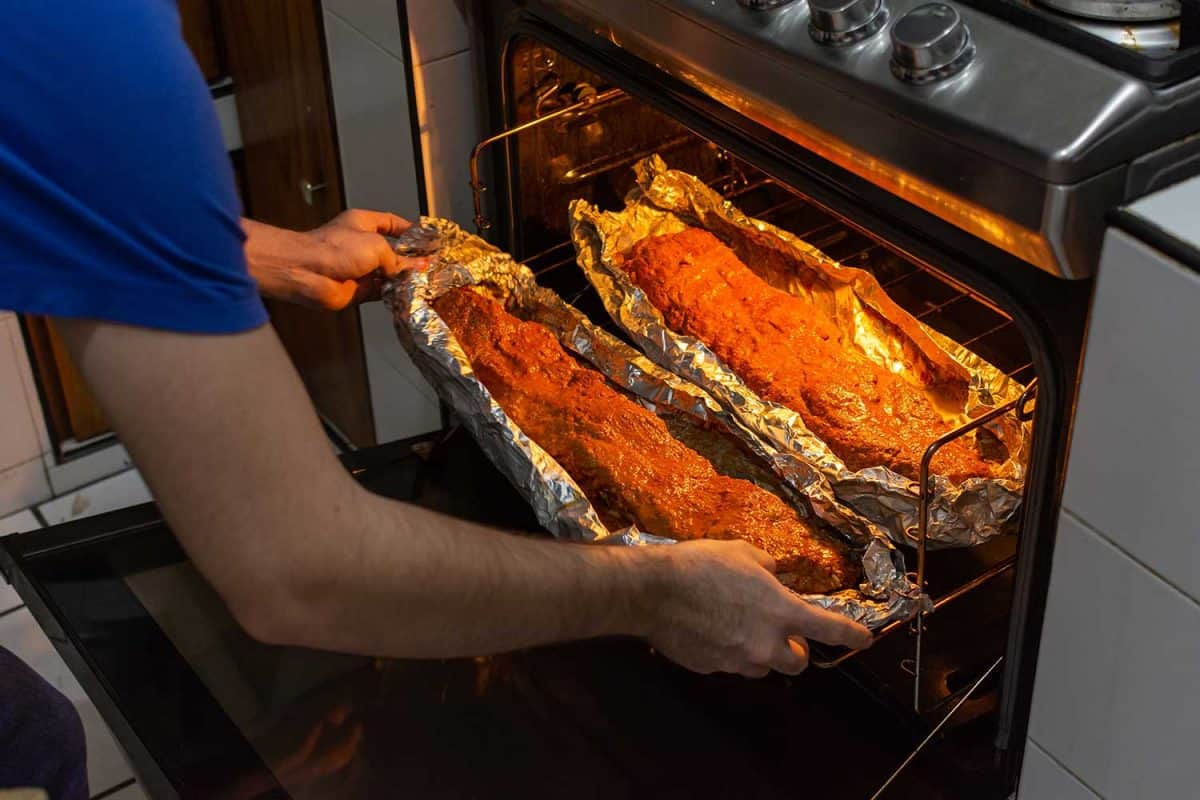
Wrapping your ribs in foil is generally considered safe. However, many people are wary of cooking and storing foods in aluminum foil. This is, in part, because research has shown that small amounts of aluminum can leach into food from foil as well as aluminum cooking utensils.
However, the same research shows that the small amount of aluminum ingested in this way passes through the body safely. A systemic review of research on this topic found no strong link between the use of aluminum foil and an increased risk of disease. While there isn't strong evidence that cooking in foil is dangerous, research is not conclusive as of yet.
How to reduce aluminum absorption when cooking ribs
If you are still concerned about cooking with aluminum, there are ways to reduce aluminum absorption when cooking ribs.
The first way is common to many rib recipes, which is to put sauce on your ribs near the end of the cooking process. Barbecue sauces often contain tomatoes, vinegar, or other acidic ingredients that increase aluminum absorption. Because of this, leaving it off until the end results in less aluminum leaching into your food.
Another method is to use butcher paper or parchment paper instead of aluminum to wrap your ribs. These kinds of paper have high heat tolerance, so they are safe to use in the oven. You will get similar results using these as using foil but without any risk of aluminum absorption.
Final Thoughts
Everyone should have access to awesome ribs at home. Making them yourself isn't rocket science, but it does take a little know-how to get succulent, fall-off-the-bone ribs in your oven.
Now you know more about balancing time and temperature, how and why to wrap your ribs, and even how to get great smokey flavor without the smoker. With these skills in hand, you are ready to fix up some properly scrumptious ribs. Bon appétit!

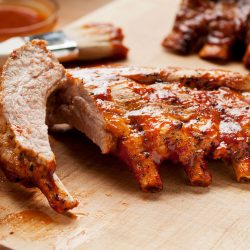
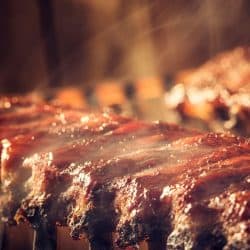
![close view inside hot operational household, Can You Bake With Aluminum Foil? [Is It Safe?]](https://kitchenseer.com/wp-content/uploads/2022/11/close-view-inside-hot-operational-household-250x250.jpg)
